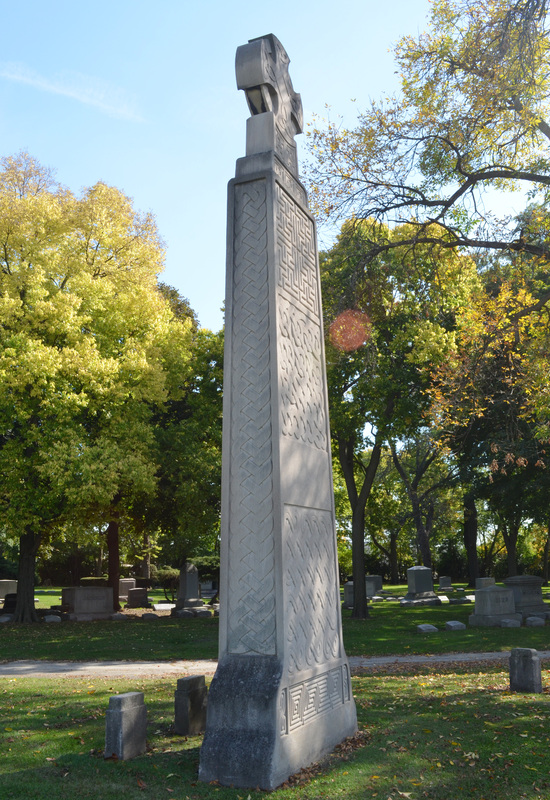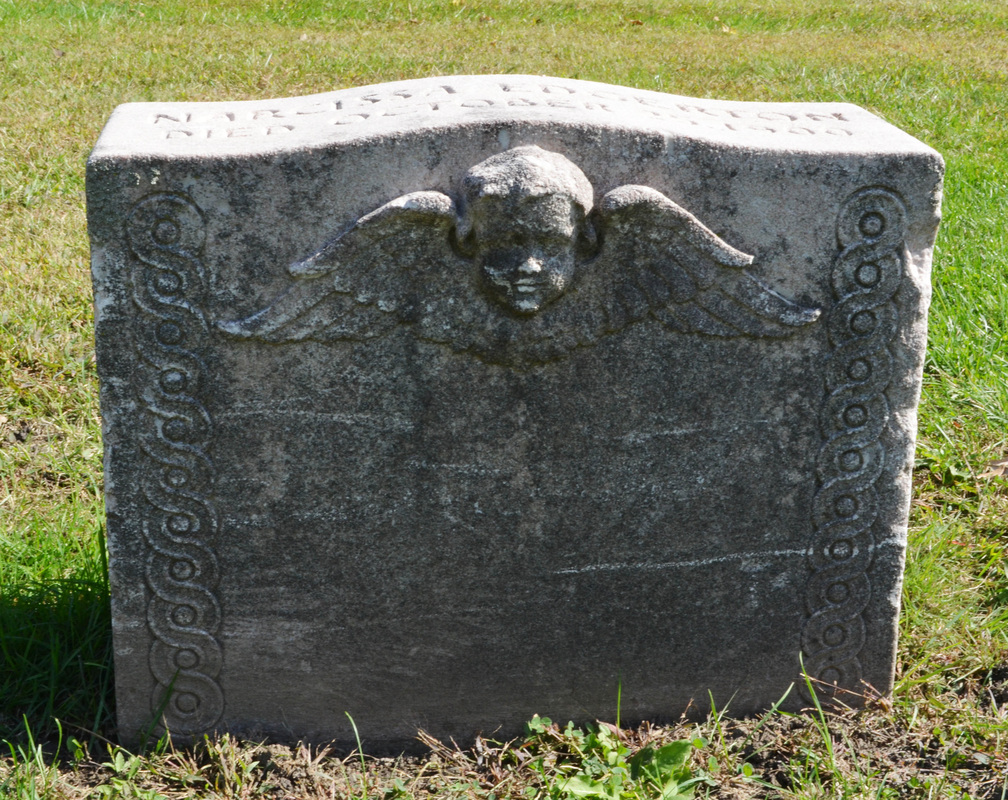Designed by Tiffany Studios
Cummings Monument

Edmund A. Cummings was a real estate developer and public transportation magnate.
Born November 29, 1842, Lowell, Massachusetts and died August 23, 1922, Oak Park, Illinois.
When the Civil War broke out, Cummings left his Elgin, Illinois, home and enlisted in the 127th Illinois Brigade. He served with General US. Grant at the siege of Vicksburg, and with General William Tecumseh Sherman on the march to the sea. As a result of his Civil War experiences, Cummings became active in the Grand Army of the Republic (GAR), the largest Civil War veterans' organization.
After the war, Cummings came to Chicago and established E. A. Cummings & Co. in 1869, which became one of the city's best-known real estate firms. In 1872, he subdivided the town of Ridgeland, an unincorporated area that is now part of east Oak Park. He also was the driving force behind the River Forest Land Association, which subdivided land in River Forest.
His real estate interests convinced Cummings that reliable and inexpensive transportation into Chicago was needed. In 1889, he and his brother founded the Cicero & Proviso Street Railway Company, an electric streetcar line. Eventually, this grew into the West Town Bus Company, serving many of the western suburbs and portions of the 200 subdivisions that his firm had developed, including parts of Forest Park and Maywood. Cummings was so influential that, after his death, there was an attempt to rename Harlem Avenue in his honor.
The Cummings burial plot was once the most elaborate in the cemetery. Each of the individual family members' graves was decorated with colorful designs that used thousands of plants and angled in toward the central monument. At the front of the plot, the plantings were laid out in the shape of a wheel to mirror the one on the monument. This landscaped wheel was ten feet in diameter. Inside the wheel, there was a spoke for each member of the family, plus an extra, broken spoke that symbolized death.
The monument was designed by the firm of Louis Comfort Tiffany and is located in Section 11
Information from Franzosenbusch Heritage Project
Born November 29, 1842, Lowell, Massachusetts and died August 23, 1922, Oak Park, Illinois.
When the Civil War broke out, Cummings left his Elgin, Illinois, home and enlisted in the 127th Illinois Brigade. He served with General US. Grant at the siege of Vicksburg, and with General William Tecumseh Sherman on the march to the sea. As a result of his Civil War experiences, Cummings became active in the Grand Army of the Republic (GAR), the largest Civil War veterans' organization.
After the war, Cummings came to Chicago and established E. A. Cummings & Co. in 1869, which became one of the city's best-known real estate firms. In 1872, he subdivided the town of Ridgeland, an unincorporated area that is now part of east Oak Park. He also was the driving force behind the River Forest Land Association, which subdivided land in River Forest.
His real estate interests convinced Cummings that reliable and inexpensive transportation into Chicago was needed. In 1889, he and his brother founded the Cicero & Proviso Street Railway Company, an electric streetcar line. Eventually, this grew into the West Town Bus Company, serving many of the western suburbs and portions of the 200 subdivisions that his firm had developed, including parts of Forest Park and Maywood. Cummings was so influential that, after his death, there was an attempt to rename Harlem Avenue in his honor.
The Cummings burial plot was once the most elaborate in the cemetery. Each of the individual family members' graves was decorated with colorful designs that used thousands of plants and angled in toward the central monument. At the front of the plot, the plantings were laid out in the shape of a wheel to mirror the one on the monument. This landscaped wheel was ten feet in diameter. Inside the wheel, there was a spoke for each member of the family, plus an extra, broken spoke that symbolized death.
The monument was designed by the firm of Louis Comfort Tiffany and is located in Section 11
Information from Franzosenbusch Heritage Project
Richardson Monuments

A second Tiffany Studio designed monuments are located in Section 1 There is no additional information known about this group of monuments. The small inscription "Copyright 1902 Tiffany Studios New York" is the only indication that it came from the Tiffany Studio.













